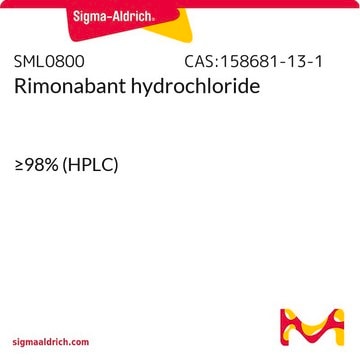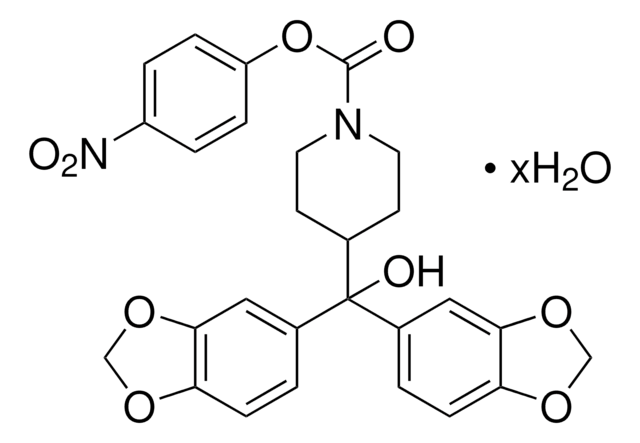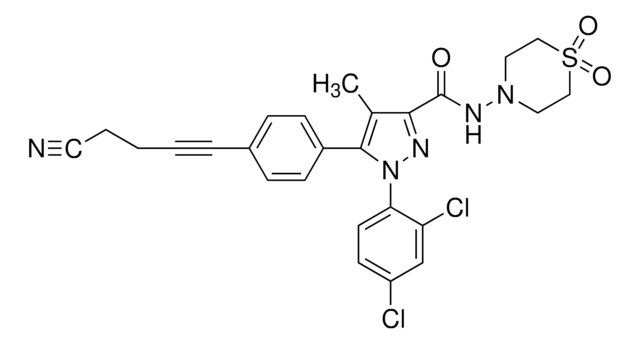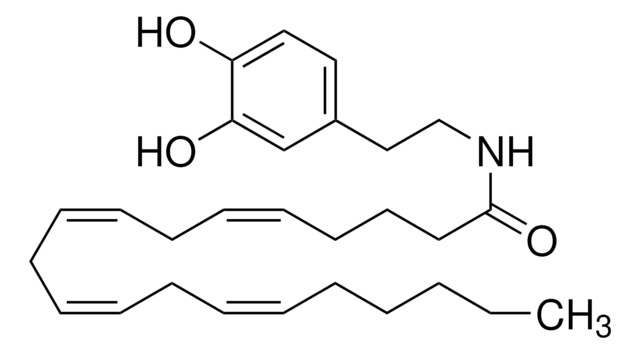A6226
AM251
>98% (HPLC), solid, cannabinoid receptor (CB1) antagonist
Synonyme(s) :
1-(2,4-Dichlorophenyl)-5-(4-iodophenyl)-4-methyl-N-1-piperidinyl-1H-pyrazole-3-carboxamide
About This Item
Produits recommandés
product name
AM251, >98% (HPLC), solid
Niveau de qualité
Pureté
>98% (HPLC)
Forme
solid
Couleur
white
Solubilité
DMSO: >10 mg/mL
H2O: insoluble
Auteur
Sanofi Aventis
Chaîne SMILES
Cc1c(nn(-c2ccc(Cl)cc2Cl)c1-c3ccc(I)cc3)C(=O)NN4CCCCC4
InChI
1S/C22H21Cl2IN4O/c1-14-20(22(30)27-28-11-3-2-4-12-28)26-29(19-10-7-16(23)13-18(19)24)21(14)15-5-8-17(25)9-6-15/h5-10,13H,2-4,11-12H2,1H3,(H,27,30)
Clé InChI
BUZAJRPLUGXRAB-UHFFFAOYSA-N
Informations sur le gène
mouse ... Cnr1(12801) , Cnr2(12802)
rat ... Cnr1(25248)
Application
Actions biochimiques/physiologiques
Caractéristiques et avantages
Autres remarques
Mentions de danger
Conseils de prudence
Classification des risques
Aquatic Chronic 4
Code de la classe de stockage
11 - Combustible Solids
Classe de danger pour l'eau (WGK)
WGK 3
Point d'éclair (°F)
Not applicable
Point d'éclair (°C)
Not applicable
Équipement de protection individuelle
dust mask type N95 (US), Eyeshields, Gloves
Certificats d'analyse (COA)
Recherchez un Certificats d'analyse (COA) en saisissant le numéro de lot du produit. Les numéros de lot figurent sur l'étiquette du produit après les mots "Lot" ou "Batch".
Déjà en possession de ce produit ?
Retrouvez la documentation relative aux produits que vous avez récemment achetés dans la Bibliothèque de documents.
Les clients ont également consulté
Notre équipe de scientifiques dispose d'une expérience dans tous les secteurs de la recherche, notamment en sciences de la vie, science des matériaux, synthèse chimique, chromatographie, analyse et dans de nombreux autres domaines..
Contacter notre Service technique













